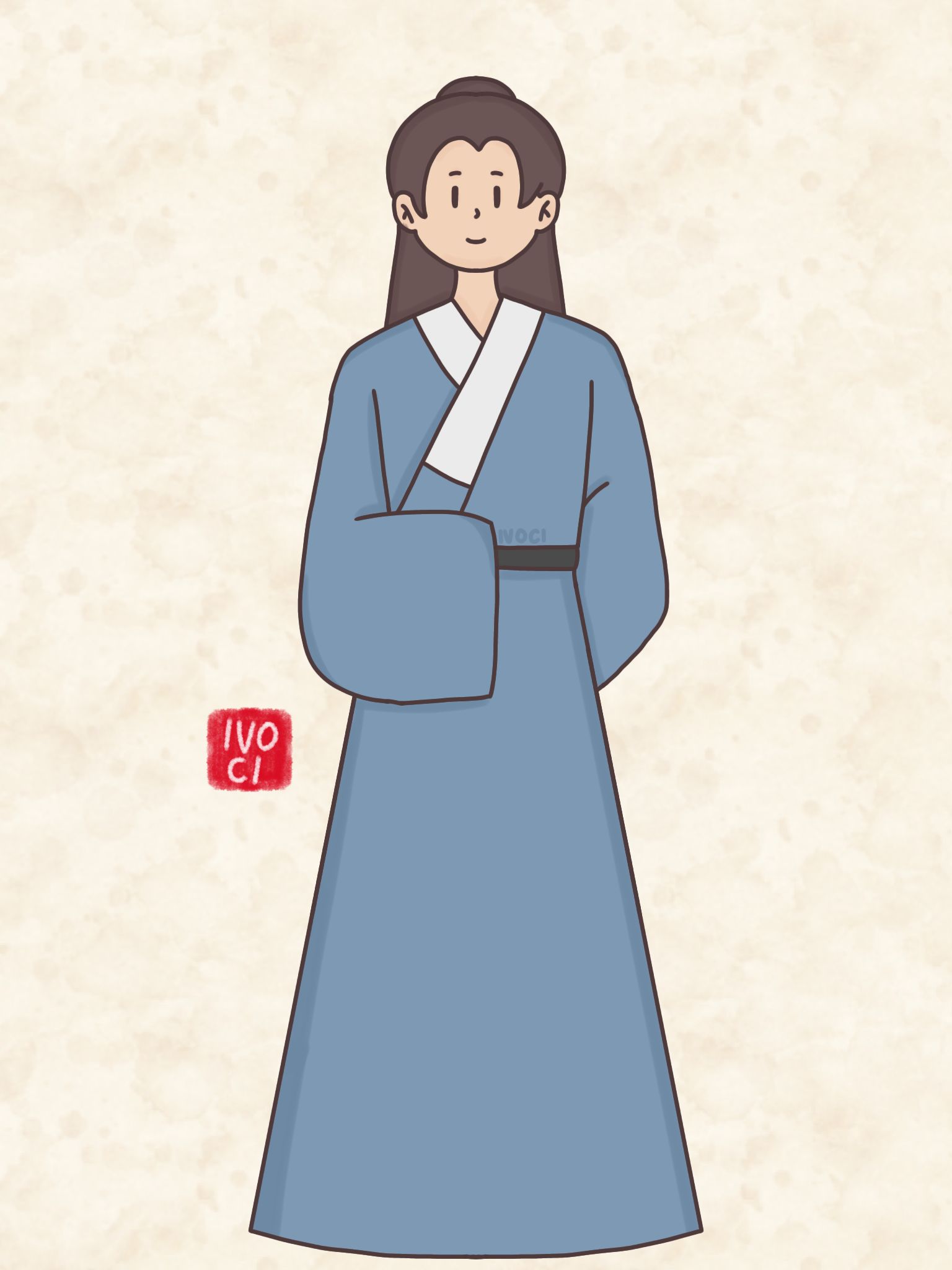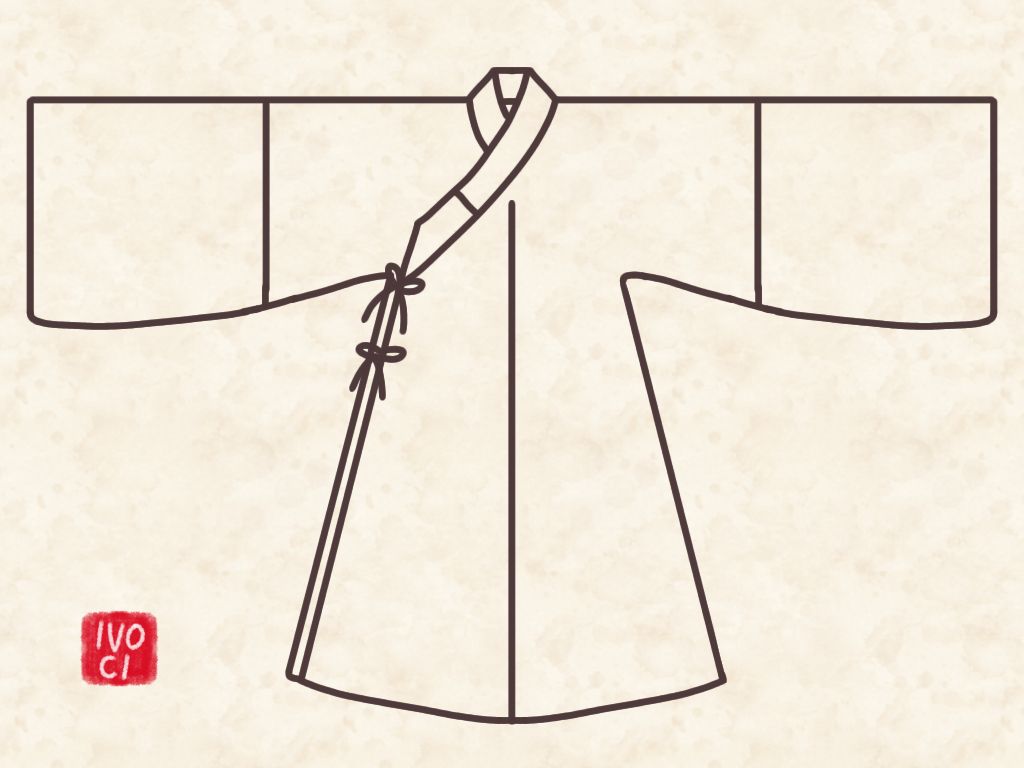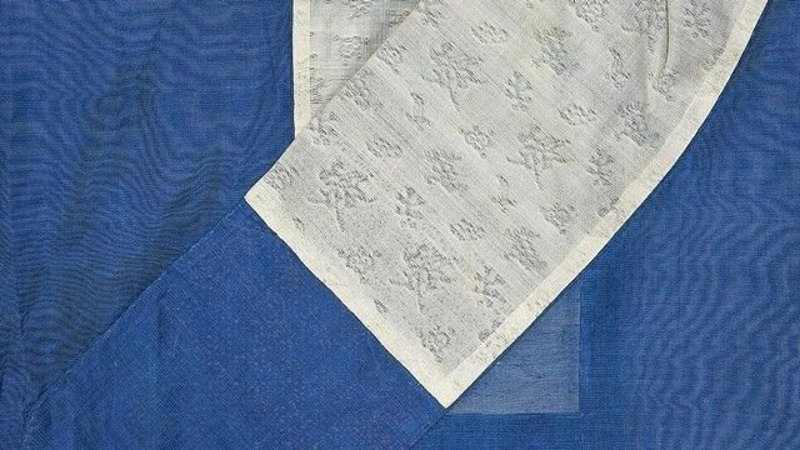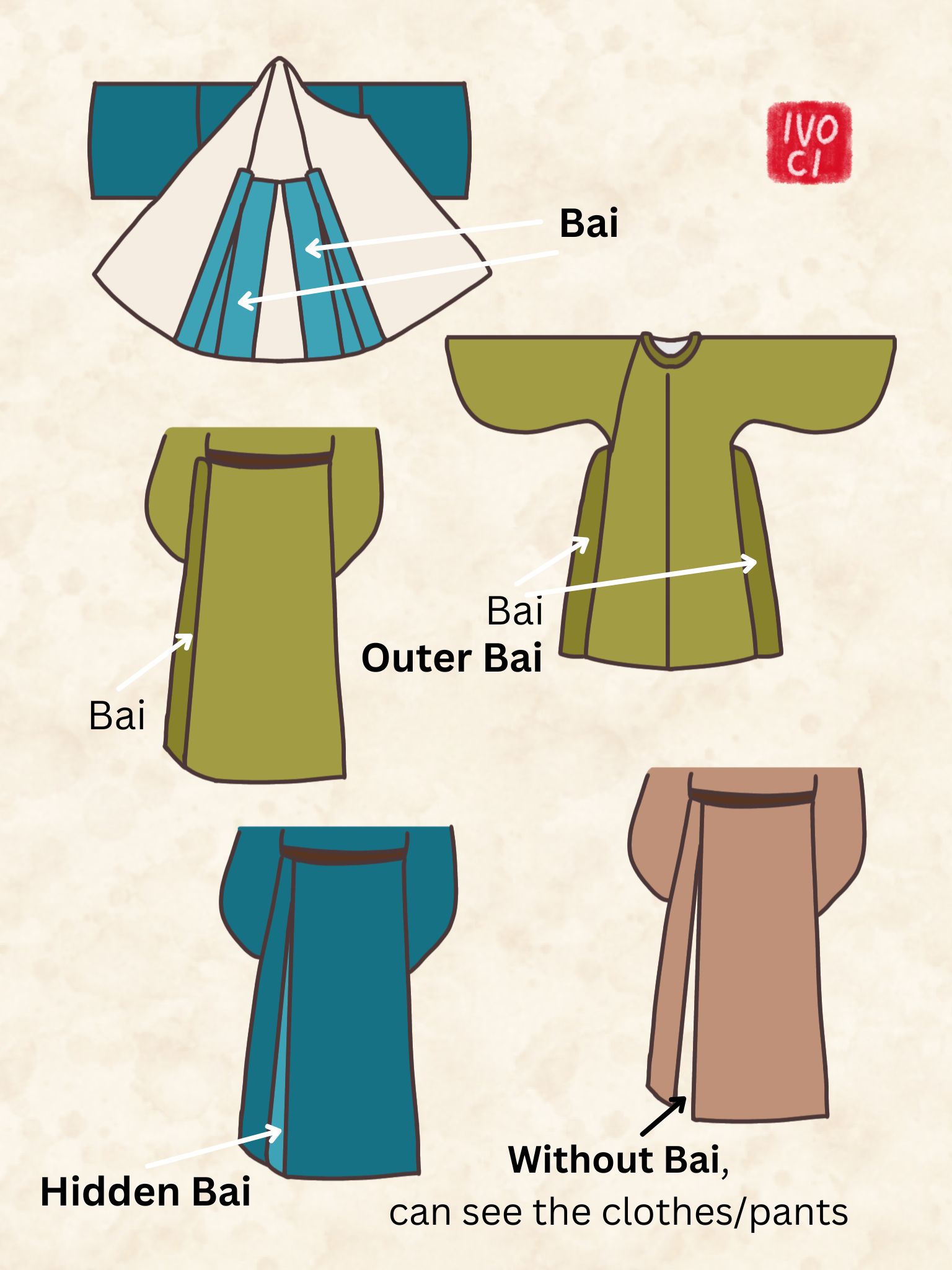Daopao (Chinese: 道袍 ; pinyin: dào páo) or Taoist robe, was very popular and typical casual clothing in the Ming dynasty, which developed from an earlier garment called Zhe (褶 ; zhě).
Daopao is also one of the traditional costumes of Taoism.
Daopao is a long outer garment with a crossed collar with a hidden Bai (摆 ; bǎi) on side of the garment.
Daopao can be worn with a silk belt, cloth belt, or a large belt.
Wide collar edges and Huling (collar guards) are usually added.
Characteristics
1. The collar shape is Jiaoling Youren (交领右衽 ; jiāo lǐng yòu rèn), most collars have Huling (护领 ; hù lǐng)
2. The method of making Daopao is Tongcai (通裁 ; tōng cái)
3. The sleeves are usually small or large, and the sleeves are made with Shou Qu (收祛 ; shōu qū)
The bottom of the cuff is tightly sewn, so that small items can be carried in the sleeves.
4. Slit from the waist down, with a hidden Bai (摆 ; bǎi)
Its function makes it easy to move around and cover clothes inside, giving off a refined and dignified impression.
5. Daopao is up to the ankles
History
In ancient times, for ordinary people from poor families, the daopao was a very appropriate choice of clothing when socializing with others outside, which is often reflected in secular novels of the Ming dynasty.
In the Qing dynasty, under the order of “shaving the hair and changing costumes”, the development of the daopao came to an end, and it can only be seen in some opera and monk costumes.
Daopao was also imported from the Ming dynasty to Korea during the Joseon period, where it became known as dopo and was eventually localized in Korea and got its present form.
Wear daopao
The good news is that the daopao is now returning to more popular use, and wearing one is the best way to preserve the garment.
The daopao can be worn on a variety of occasions, either as a robe or as outerwear, as casual everyday wear, or as ceremonial clothing for festivals, and its attributes are often based on cloth trimmings or patterns.
In general, daopao decorated with ornate patterns or decorated with Buzi (补子 ; bǔ zi) are often worn as a formal dress on ceremonial occasions. While daopao with less embroidery and relatively plain is more suitable for casual wear.
Daopao can also be paired with various other Hanfu outfits, such as Pifeng (披风) and Bijia (比甲).






Leave a Reply